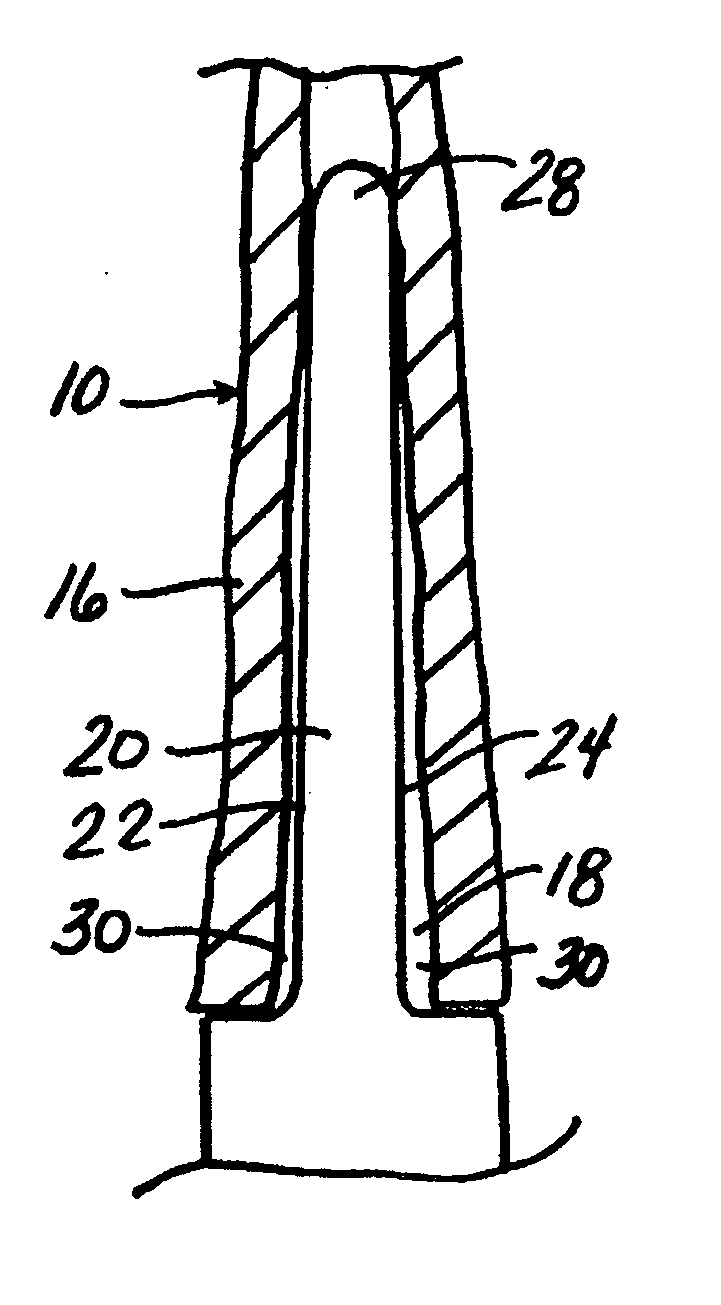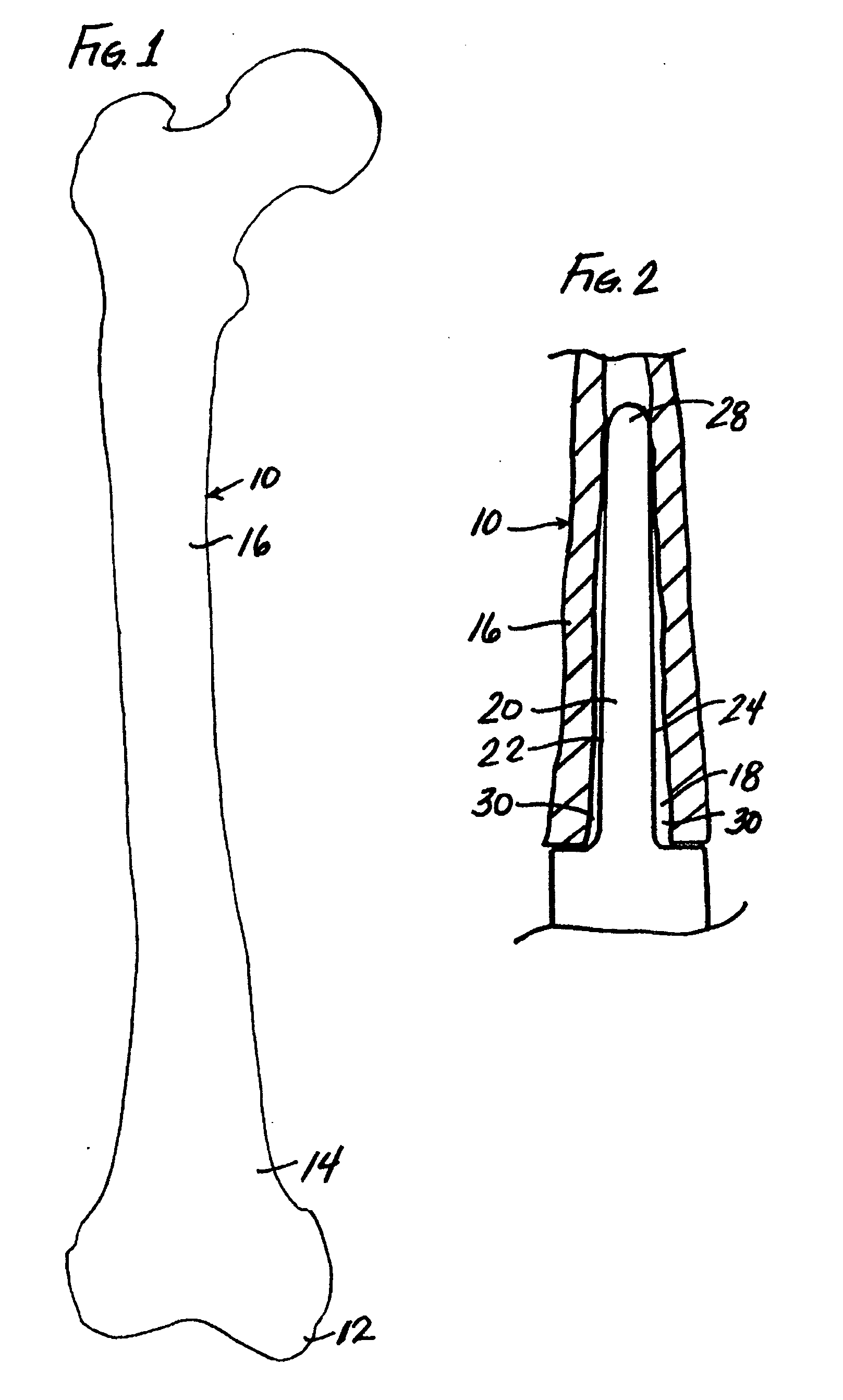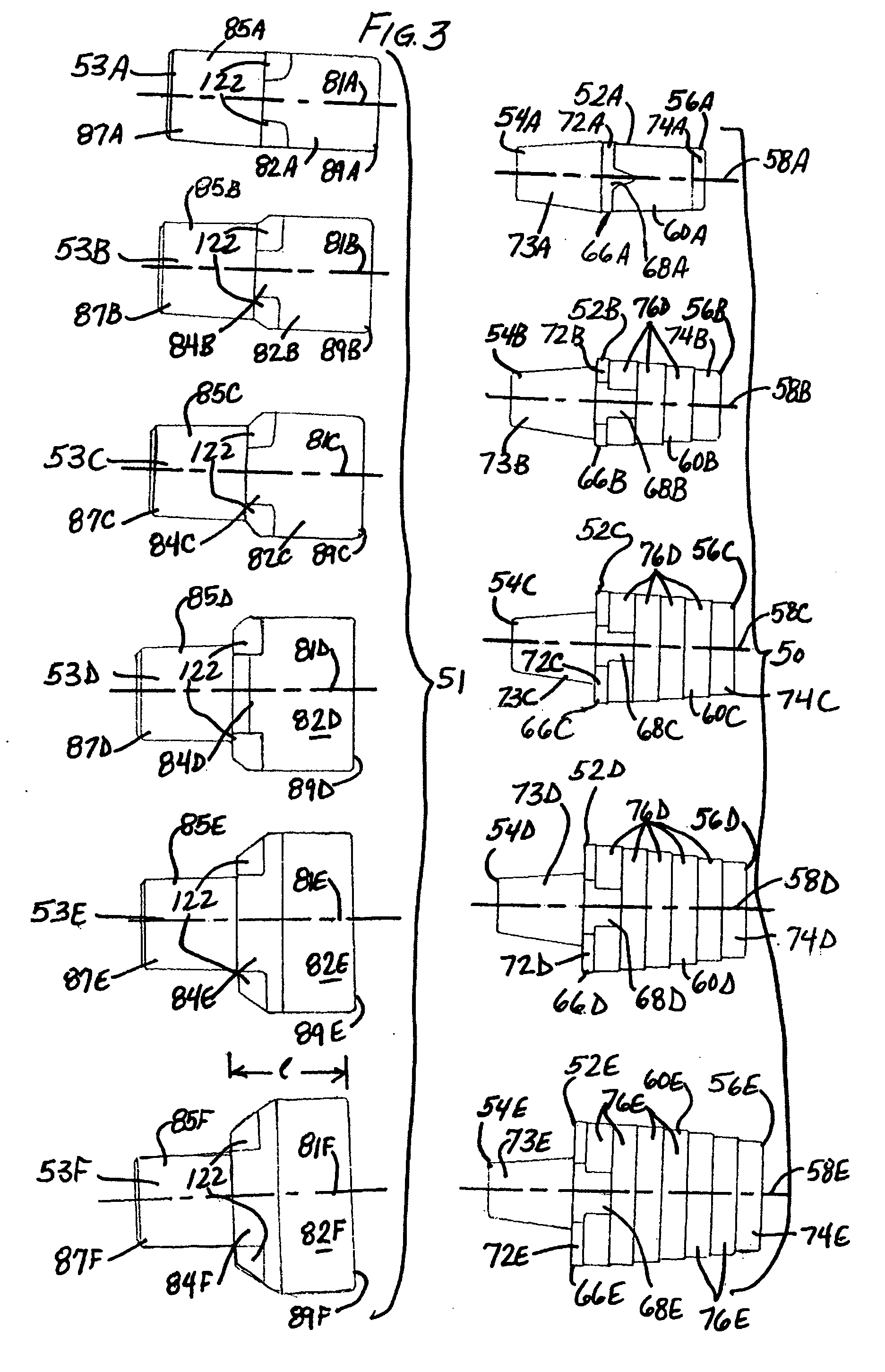Modular diaphyseal and collar implant
a diaphyseal and collar implant technology, applied in the field of prosthetic joints, can solve the problems of ligamentous instability, significant bone loss, and failure of primary prosthesis
- Summary
- Abstract
- Description
- Claims
- Application Information
AI Technical Summary
Benefits of technology
Problems solved by technology
Method used
Image
Examples
Embodiment Construction
[0041] A modular orthopaedic knee implant system incorporating the principles of the present invention is illustrated in the accompanying drawings. The illustrated modular orthopaedic knee implant system includes components of several existing orthopaedic knee implant systems, along with new components that provide the orthopaedic surgeon with greater flexibility in selecting the appropriate components to suit the needs of an individual patient. These patient needs can include factors such as individual anatomy and the condition of the native bone tissue.
[0042]FIG. 3 illustrates a set 50 of diaphyseal components and a set of collar components 51 that may be used in the system or kit of the present invention. The illustrated set 50 of diaphyseal components includes five sizes of diaphyseal components, labeled 52A, 52B, 52C, 52D, 52E. The illustrated set of collar components 51 includes six sizes of collar components, labeled 53A, 53B, 53C, 53D, 53E, 53F.
[0043] The illustrated diaph...
PUM
 Login to View More
Login to View More Abstract
Description
Claims
Application Information
 Login to View More
Login to View More - R&D
- Intellectual Property
- Life Sciences
- Materials
- Tech Scout
- Unparalleled Data Quality
- Higher Quality Content
- 60% Fewer Hallucinations
Browse by: Latest US Patents, China's latest patents, Technical Efficacy Thesaurus, Application Domain, Technology Topic, Popular Technical Reports.
© 2025 PatSnap. All rights reserved.Legal|Privacy policy|Modern Slavery Act Transparency Statement|Sitemap|About US| Contact US: help@patsnap.com



